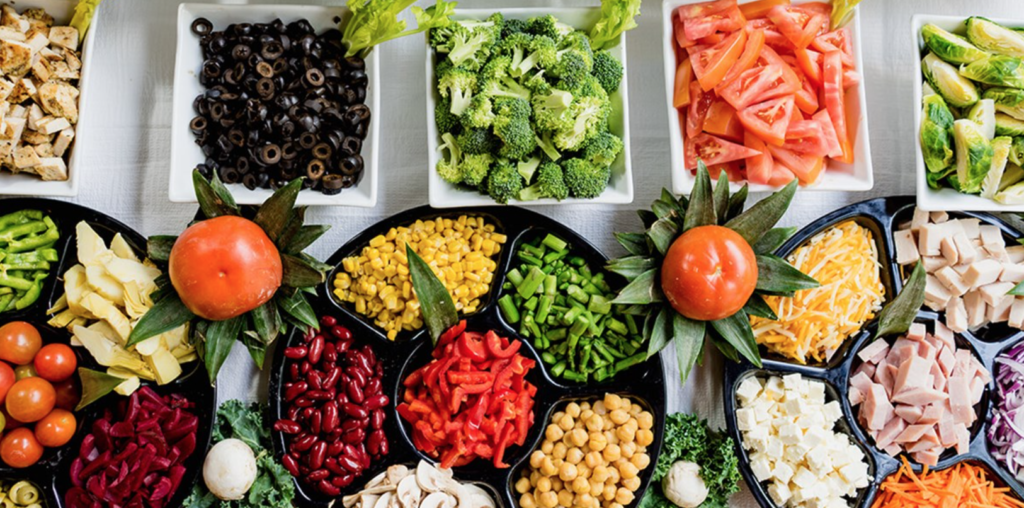Eating Seasonally
Eating seasonally is one of the best ways to increase our nutrition intake. Eating foods at their peak ripeness ensures we are getting the maximum amount of nutrition.
Side note – eating frozen fruits and vegetables in the winter is just as nutritious (if not more) than eating fresh.
In Alberta, it’s no secret we have a short growing season, so most fresh produce is available from July – August. However, some crops prefer the cooler temps and are ready early and thanks to greenhouses, we can produce fresh produce as early as May or June.
Grab this seasonal food chart for Alberta for a guide to eating fresh and seasonal year-round. If you want a broader scope of the Western provinces, check out this seasonal Guide by Sobeys.

Here are a couple of foods to keep an eye on and incorporate into your meal plans in the next couple months for maximum nutrition and flavour!
1. Asparagus. This crunchy spear-like vegetable is a great source of vitamins C, K, folate, and a good source of fibre. It can be eaten raw, but I love it best roasted or sauteed with olive oil, lemon, and salt and pepper. Just be sure to trim off the ‘woody’ ends. For more on how to cook asparagus and some interesting recipes, check out this chef’s review.
Keep in mind, if you do go on an asparagus bend and start eating lots of it, don’t be alarmed if you notice the smell of your urine change. This is due to an antioxidant called ‘asparagusic acid’ and is quite good for your health!
2. Rhubarb. Ah rhubarb – the perennial that keeps on giving. It’s tart and sour and grows tall in a celery shape that ombres from green to red. The red color is from a kind of antioxidant called anthocyanins. Wait until your rhubarb stalk is almost all red for it to be the most ripe!
Rhubarb is an excellent source of vitamin C and one of the first things to pop up in the garden after the ice melts. You can harvest it multiple times throughout the summer season, which means you’ll never run short!
3. Radishes – these crunchy peppery round root vegetables are an early spring/summer crop. They’re one of the first things ready to go in the garden. The varieties grown locally are usually red exteriors with white interiors. They are a good source of vitamin C, B vitamins, and potassium. They also contain a lot of antioxidants that are beneficial to help fight off disease.
If you don’t have a garden to plant this year, watch for these vegetables at your grocery store. They may even have a ‘local’ or ‘from your farmers’ section.
Farmer’s markets will start to carry the earliest spring crops as they are ready, so you’ll be getting them as fresh as possible from there.
The third option is to check out a local produce box subscription. As fresh vegetables are available, you’ll see them show up in your produce box, delivered fresh to your door.
Happy spring, and happy eating!
Connect with our dietitian to discover what your unique nutrition needs are and how healthy, simple habits can make a difference in you and your family’s lives.






